Well, I got a new phone yesterday which has an unbelievable camera... and I happened to have a very social octopus last night - so we were able to get several clear photos of the spots.
When you are close to him, you can see the spots appear to be internal, almost sac-like. They are not external colorings.
Here are a few of the "better" pictures and you can see regardless of movement or color changes, the spots remain.
I also paid extra attention to arm size. When he is swimming with legs stretched behind, you can tell all his arms are the same size.
* On another note - still can't get him to eat fiddlers on a regular basis. He still prefers red legs & small snails. (and of course the magic stick that brings shrimp!)
When you are close to him, you can see the spots appear to be internal, almost sac-like. They are not external colorings.
Here are a few of the "better" pictures and you can see regardless of movement or color changes, the spots remain.
I also paid extra attention to arm size. When he is swimming with legs stretched behind, you can tell all his arms are the same size.
* On another note - still can't get him to eat fiddlers on a regular basis. He still prefers red legs & small snails. (and of course the magic stick that brings shrimp!)

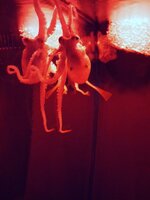
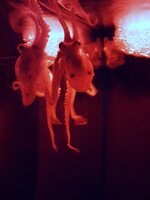
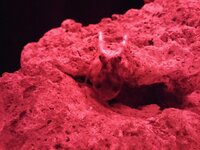
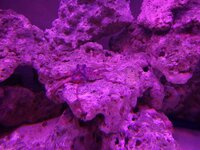
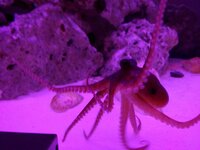
 that he just found a new den. I've been lucky that Wink has made a den in a smaller piece of LR that sits on the top of the rock formation and has stayed there. She hasn't bothered to move down the LR at all. But once she does move or when she passes and another Octopus comes to inhabit the tank, there are tons of hiding places for them to disappear.
that he just found a new den. I've been lucky that Wink has made a den in a smaller piece of LR that sits on the top of the rock formation and has stayed there. She hasn't bothered to move down the LR at all. But once she does move or when she passes and another Octopus comes to inhabit the tank, there are tons of hiding places for them to disappear.